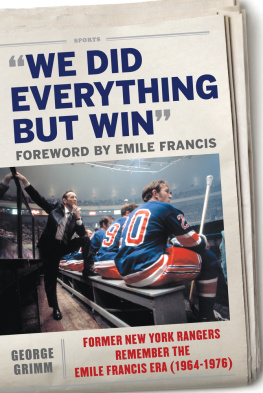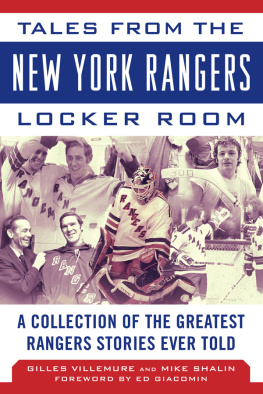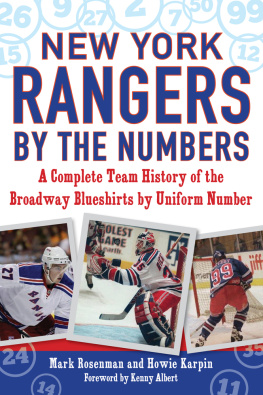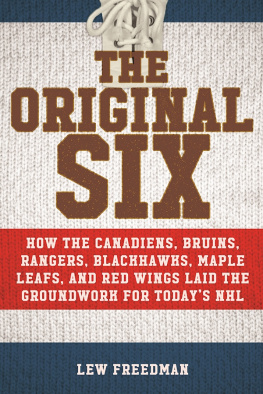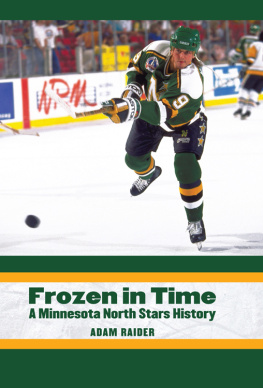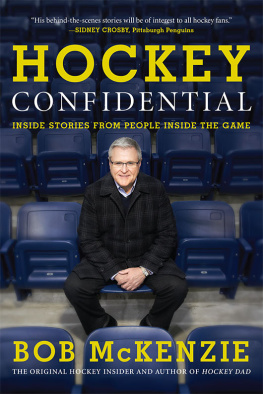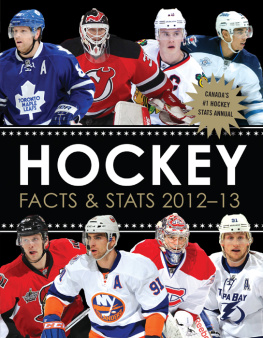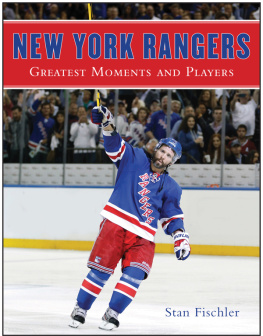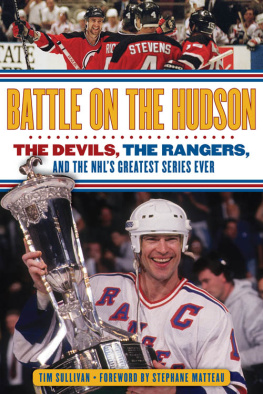Copyright 2017 by George Grimm
All rights reserved. No part of this book may be reproduced in any manner without the express written consent of the publisher, except in the case of brief excerpts in critical reviews or articles. All inquiries should be addressed to Sports Publishing, 307 West 36th Street, 11th Floor, New York, NY 10018.
Sports Publishing books may be purchased in bulk at special discounts for sales promotion, corporate gifts, fund-raising, or educational purposes. Special editions can also be created to specifications. For details, contact the Special Sales Department, Sports Publishing, 307 West 36th Street, 11th Floor, New York, NY 10018 or .
Sports Publishing is a registered trademark of Skyhorse Publishing, Inc., a Delaware corporation.
Visit our website at www.sportspubbooks.com.
10 9 8 7 6 5 4 3 2 1
Library of Congress Cataloging-in-Publication Data is available on file.
Cover design by Tom Lau
Cover photo: From the Lens of George Kalinsky
All photos in insert courtesy of Jay Moran, unless otherwise noted.
ISBN: 978-1-5107-2230-9
Ebook ISBN: 978-1-5107-2231-6
Printed in the United States of America
This book is dedicated to my father George Grimm,
who introduced me to the Rangers so many years ago,
and to John Halligan who encouraged me to write about them.
CONTENTS
FOREWORD
THE NEW YORK Rangers have a long, rich, and colorful history and I was very proud to be part of it as a player, general manager, and coach.
When I took over as general manager in 1964 the Rangers had not made the playoffs in three years and only once in the previous six seasons. The farm system wasnt producing, players from other teams didnt want to be traded here, and the players we had were small. One year I sent our uniforms from the previous season to one of our junior clubs so they could use them and a week later I got a call from their general manager saying that the uniforms were too small.
It took some time but we were able to reorganize the minor league system, increase the number of our junior clubs, add more scouts, and start to bring in players that had the skill and size to bring the team back to respectability.
I was lucky enough to coach some of the greatest players in Ranger history: Jean Ratelle, Rod Gilbert, Harry Howell, Brad Park, Ed Giacomin, Walt Tkaczuk, and many others. And within a couple of years we were able to turn the organization around and make the playoffs for nine consecutive seasons.
We had some very good teams. We did everything but win. We were good enough to win two or three Stanley Cups but in order to win youve got to be good and youve got to be lucky. Youve gotta be healthy. Youve got to stay away from injuries.
But I was always very proud of my players, they worked hard, never quit, and they always gave it everything they had. They knew the systems that I put in place and didnt stray from those systems. We always competed. And they were a great group to coach. They were like a family and stuck up for one another.
I had to make some tough decisions along the way but thats what general managers are paid to do. Some of those decisions worked out and some didnt but Ive never had any regrets. The years I spent in New York were the best years of my life.
Emile Francis
West Palm Beach, Florida
INTRODUCTION
THEIR JOURNEY BEGAN almost sixty years ago when a young father took his very small son by the hand and led him to New York City and to a dark, smoky place with a lot of steps and a bright white sheet of ice at the center.
Little did the young boy know that what he was about to experience at the old Madison Square Garden that night would stay with him for the rest of his life.
Down on the ice, players dressed in brightly colored uniforms skated effortlessly as heavily padded goaltenders kicked and swatted at pucks fired with crooked sticks. The rest of the people in the arena seemed to react in unison to the action on the ice as their gasps, groans, and cheers came as one. The little boy instantly began to love this game and this place, for its speed and color and the excitement it brought into his young life.
The boy began reading everything he could get his hands on about this Canadian sport. He learned about its history and heroes, players like Maurice and Henri Richard and Jean Beliveau, Eddie Shore and Howie Morenz, Gordie Howe, Terry Sawchuk, and Johnny Bower. He also read about Lord Stanley of Preston and his fabled Cup and men like Frank Boucher, Davey Kerr, the Cook brothers and Lester Patrick who had won it for the Rangers not all that long ago in the 30s and 40s.
He memorized the words to O Canada and The Rangers Victory Song and asked his mother for a Rangers jersey for Christmas. The request prompted the usual Well see response, but a few weeks later the boy unwrapped one of the greatest presents he had ever receiveda blue Rangers jersey with a big number 1 on the back! The youngster sat glued to the television on Saturday nights while Win Elliot and Bob Wolff brought the heroics of Gump Worsley, Andy Bathgate, and Harry Howell into his living room. He played table hockey with his dad in the kitchen, always having to be the Bruins to his fathers Rangers. He soon became the only kid on his block who owned a hockey stick as he shot a ball against the factory wall across the street. His neighbors must have thought the kid was nuts!
At the time, the Rangers and Bruins battled for fifth place instead of first and the Stanley Cup was something that Toronto, Montreal, and Detroit played for. But it wasnt about winning and losing back then, just about watching the game and marveling at the artistry of the players. But as the boy grew into a teenager the Rangers signed Boom Boom Geoffrion and made the playoffs for the first time since he began watching them. His father stood on a pre-dawn line for playoff tickets. But that spring, the Blueshirts brought tears to the young mans eyes for the first time as they lost four straight to the mighty Canadiens. The father knew those tears would not be the last.
The years went by. The boy used his high school ID card to buy side balcony seats at the old Garden for $1.25 and later shared season tickets in the blue seats with his father when the new Garden opened. They also shared the joys and disappointments of being a Rangers fan while the likes of Ed Giacomin, Brad Park, Jean Ratelle, Rod Gilbert, Walter Tkaczuk, Ted Irvine, and Pete Stemmer Stemkowski performed before them. But as each era came and went, the results were the same. With each passing year, the tears became fewer as the expectations dimmed. Both wanted to believe, but neither actually thought theyd ever see a Rangers Stanley Cup victory together.
But then something truly amazing happened. Somehow the sun, the moon, and the stars aligned perfectly and at about eleven oclock on the evening of June 14, 1994, the son telephoned his father and they watched the spectacle together, speechless. The tears once again flowed from their eyes, for the journey had finally led to the Promised Land. Although in different cities, they were sharing their first Stanley Cup together. Words failed them. A huge weight had been removed from their shoulders. Their lives had changed forever. They would never again have to hear chants of 1940 or feel embarrassed when asked the eternal question, Whats the matter with your Rangers?
As youve probably guessed by now, I am the young boy in this story. Pop is gone now but Im forever grateful to him for introducing me to the game of hockey and the New York Rangers, and taking me on the longest, most frustrating, and yet most rewarding journey of my life.

